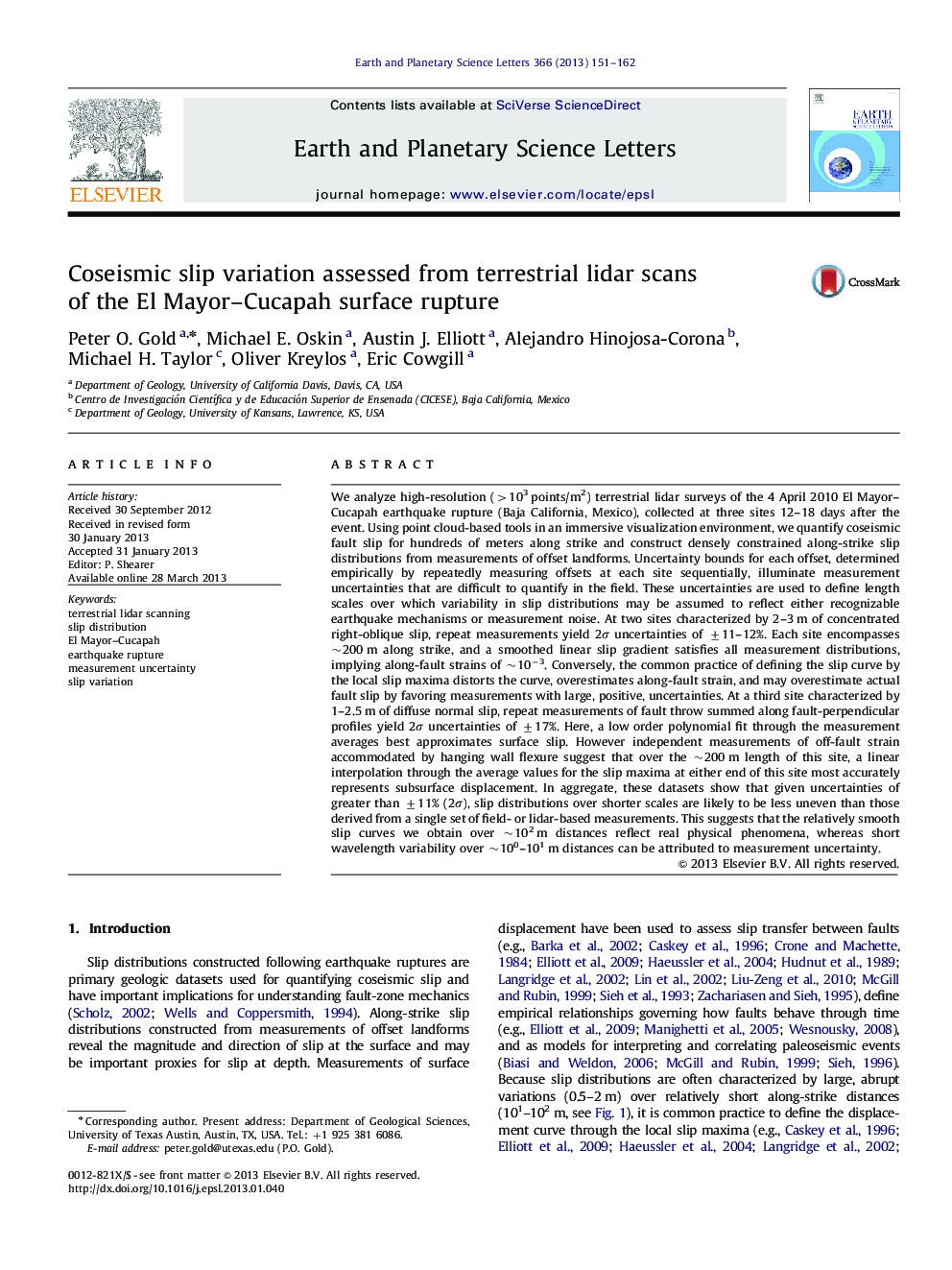| کد مقاله | کد نشریه | سال انتشار | مقاله انگلیسی | نسخه تمام متن |
|---|---|---|---|---|
| 6430369 | 1634787 | 2013 | 12 صفحه PDF | دانلود رایگان |
We analyze high-resolution (>103 points/m2) terrestrial lidar surveys of the 4 April 2010 El Mayor-Cucapah earthquake rupture (Baja California, Mexico), collected at three sites 12-18 days after the event. Using point cloud-based tools in an immersive visualization environment, we quantify coseismic fault slip for hundreds of meters along strike and construct densely constrained along-strike slip distributions from measurements of offset landforms. Uncertainty bounds for each offset, determined empirically by repeatedly measuring offsets at each site sequentially, illuminate measurement uncertainties that are difficult to quantify in the field. These uncertainties are used to define length scales over which variability in slip distributions may be assumed to reflect either recognizable earthquake mechanisms or measurement noise. At two sites characterized by 2-3 m of concentrated right-oblique slip, repeat measurements yield 2Ï uncertainties of ±11-12%. Each site encompasses â¼200 m along strike, and a smoothed linear slip gradient satisfies all measurement distributions, implying along-fault strains of â¼10â3. Conversely, the common practice of defining the slip curve by the local slip maxima distorts the curve, overestimates along-fault strain, and may overestimate actual fault slip by favoring measurements with large, positive, uncertainties. At a third site characterized by 1-2.5 m of diffuse normal slip, repeat measurements of fault throw summed along fault-perpendicular profiles yield 2Ï uncertainties of ±17%. Here, a low order polynomial fit through the measurement averages best approximates surface slip. However independent measurements of off-fault strain accommodated by hanging wall flexure suggest that over the â¼200 m length of this site, a linear interpolation through the average values for the slip maxima at either end of this site most accurately represents subsurface displacement. In aggregate, these datasets show that given uncertainties of greater than ±11% (2Ï), slip distributions over shorter scales are likely to be less uneven than those derived from a single set of field- or lidar-based measurements. This suggests that the relatively smooth slip curves we obtain over â¼102 m distances reflect real physical phenomena, whereas short wavelength variability over â¼100-101 m distances can be attributed to measurement uncertainty.
⺠We investigate whether variability in slip distributions is actually due to error. ⺠Repeat slip measurements at 3 sites reveal uncertainties of ±11-17%. ⺠Over â¼102 m distances, errors represent a large component of along-strike variability. ⺠Over such distances, displacement maxima are likely to be statistical outliers. ⺠Slip curves fit to these maxima may be artificially distorted and overestimate strain.
Journal: Earth and Planetary Science Letters - Volume 366, 15 March 2013, Pages 151-162
